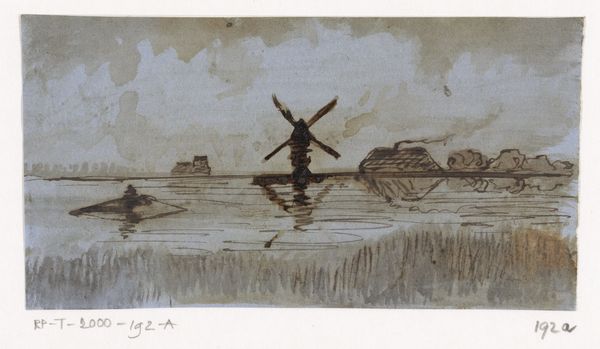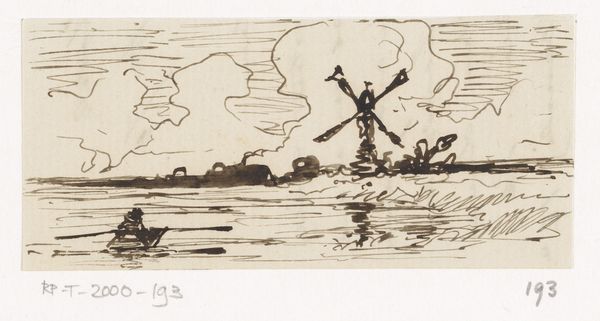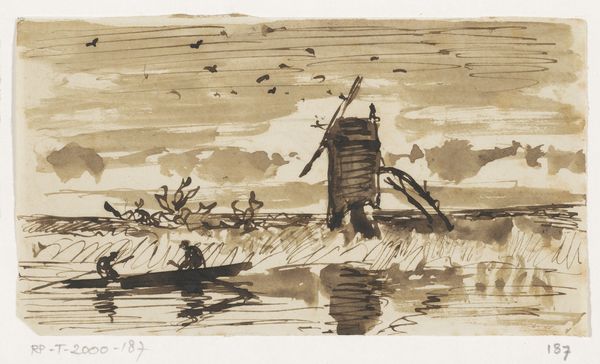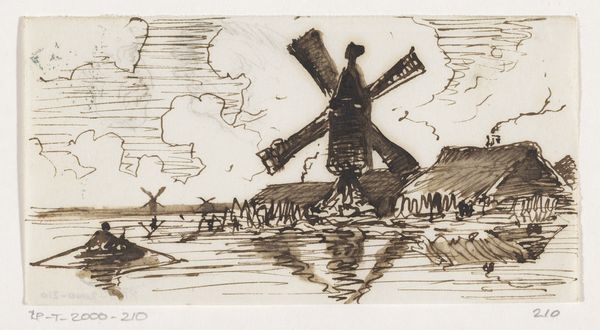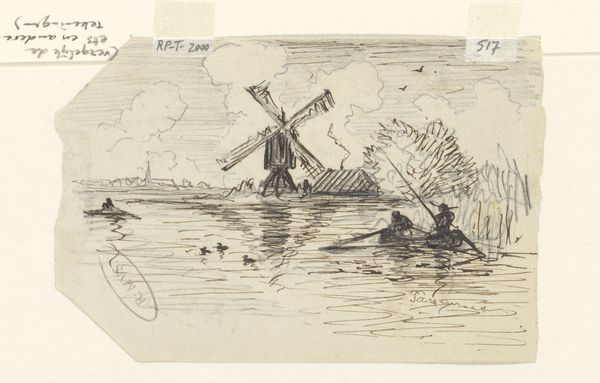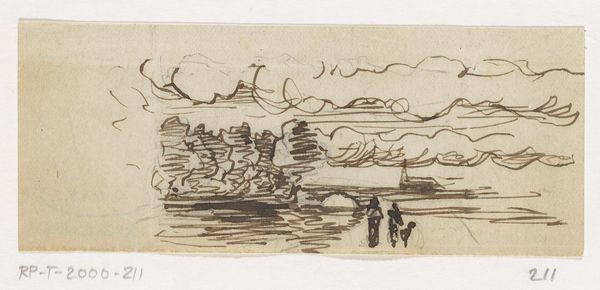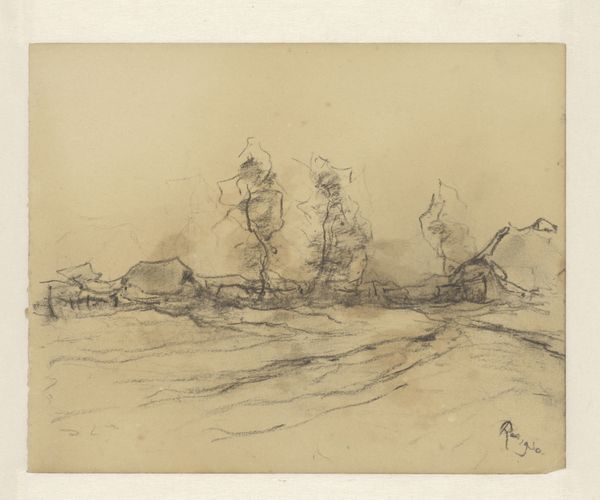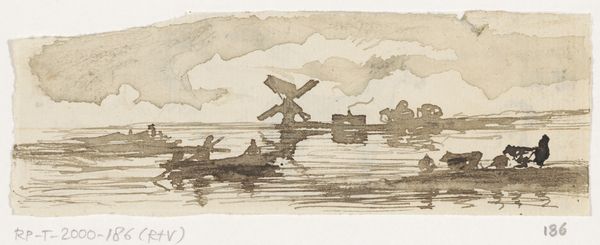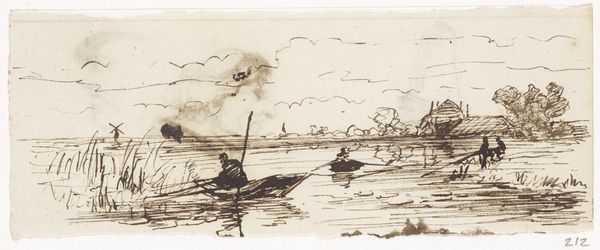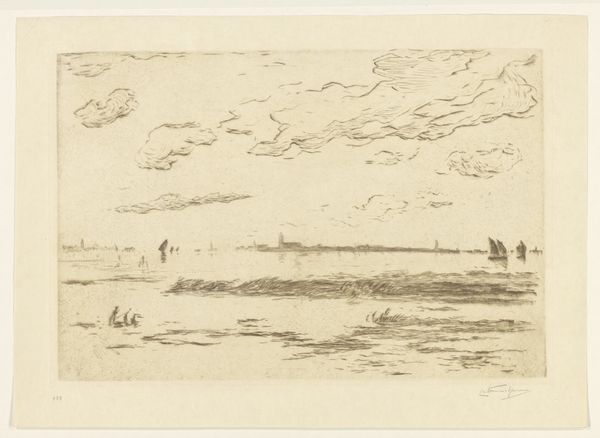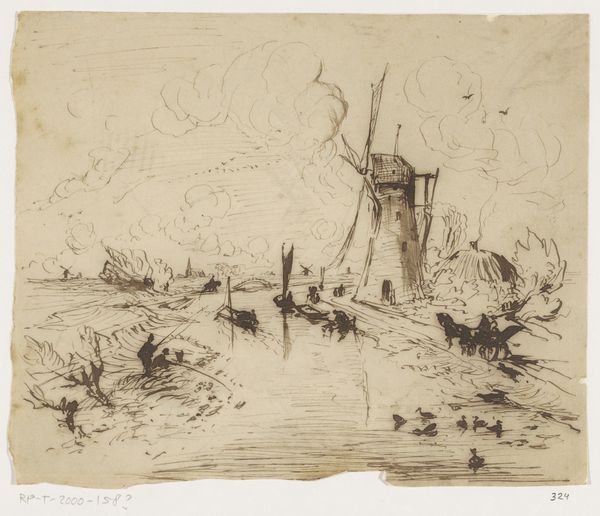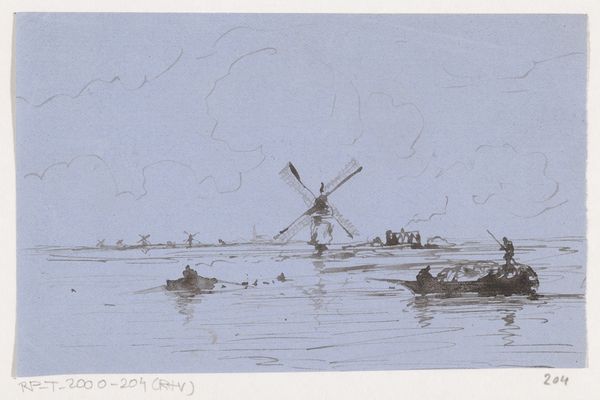
drawing, paper, ink
#
drawing
#
ink painting
#
landscape
#
etching
#
paper
#
ink
#
watercolour illustration
#
realism
Dimensions: height 85 mm, width 152 mm
Copyright: Rijks Museum: Open Domain
Editor: Here we have Johannes Tavenraat's "Rivierlandschap", possibly from 1869. It's an ink and watercolor drawing on paper. There's such a stillness to it, a muted quality. What strikes me is how the reflection on the water seems to mirror and almost mock the scene. What do you see in this piece? Curator: I see a deliberate engagement with the changing Dutch landscape during a period of intense industrial and social upheaval. This isn't just a pretty picture of a river. Look at the windmill, seemingly broken, decaying almost within the reflective expanse. How does this image speak to you about ideas of progress versus tradition? Editor: I hadn't considered the broken windmill like that, more like a serene image than anything else. It looks peaceful, which is maybe why it's in the Rijksmuseum. Curator: Peace can be deceptive. Consider this drawing as a commentary on the social cost of modernization. What might the artist be saying about those whose livelihoods were tied to now-obsolete technology or a disappearing agrarian lifestyle? It also is notable that Tavenraat included laborers working their animals near the banks; how does that make you reconsider the artwork as an activist statement? Editor: That’s an interesting interpretation! I guess I was so focused on the composition. But your activist approach gives me so much more to think about than simple subject matter, the historical implications add real depth. Curator: Exactly. Examining art through an intersectional lens enables us to understand not just the "what," but the "why" and "for whom". Keep looking beneath the surface.
Comments
No comments
Be the first to comment and join the conversation on the ultimate creative platform.

